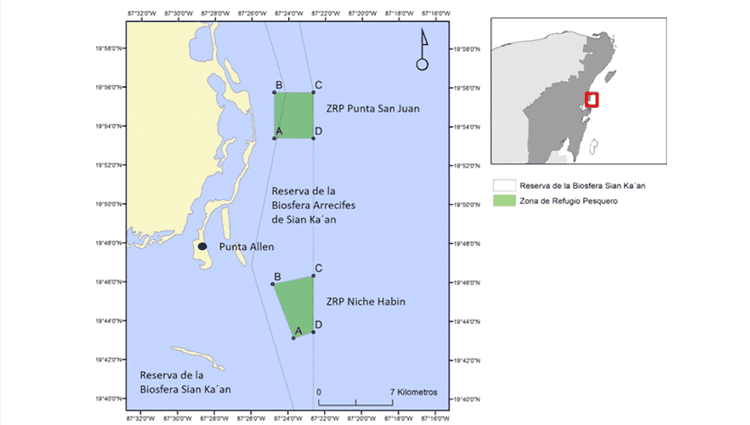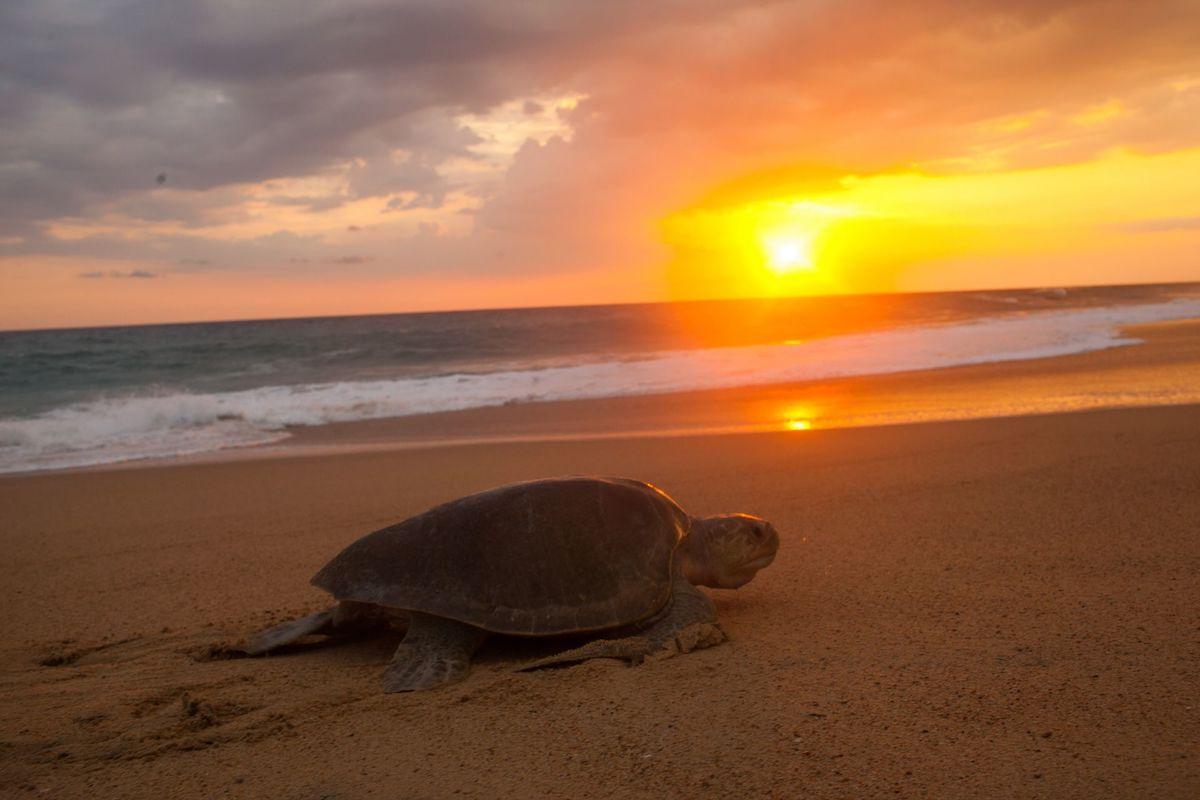The fishing shelter area of Ascension Bay, Quintana Roo, in southeastern Mexico, will remain for five more years. At the end of 2022, the Ministry of Agriculture and Rural Development (Sader) announced that the two shelters intended for the preservation of lobster would receive an extension of time.
The news has been a success for the fishermen of the Vigía Chico Cooperative Fisheries Production Society, originally from the town of Punta Allen, an island facing the bay, who are responsible for ensuring that the refuge exists.
The Vigía Chico cooperative has an exclusive concession for lobster fishing through free diving, so before 2016 they decided to request the two fishing refuge areas for the reproduction, rearing and conservation of lobster.
Currently, they have facilities that allow them to carry out everything from evaluations to DNA studies on the species.
“Over the years, monitoring groups were formed. It has been fishermen from the cooperative and people from the community who drive, obtain data, do the diving,” explains Emilio Pérez, secretary of administration of the Vigía Chico cooperative.
Although it represents an advance, the expansion of the shelter has raised concerns about its maintenance due to the reduction in the budget for essential activities such as inspection and surveillance for illegal or irregular fishing, among other needs such as infrastructure and personnel.
In the case of fishing shelters in Mexico, these deficiencies are common. In Akumal, Ascension Bay, Espíritu Santo Bay (Sian Ka'an) and Canal Nizuc, in Quintana Roo; and Puerto Libertad and San Pedro Nolasco Island, in Sonora, no government support has been granted for inspection and surveillance or implementation of fisheries management projects, according to data provided by the National Fisheries and Aquaculture Commission (Conapesca) to Causa Natura.
In fact, during the years 2019 and 2020, Conapesca did not grant any subsidies to fishing refuge areas.
In the case of Ascención Bay, all this time, technical studies and analyses, as well as rounds for inspection and personnel, have been carried out by fishermen and villagers, who have formed alliances with organizations such as Community and Biodiversity, A.C. (COBI) to receive support.
“The issue (of budgeting and inspection) is a problem in Mexico. From fisherman to fisherman, it is known that there is none and that we do not have the authority to punish (when offenses are committed in the refuge). We can only organize ourselves, make an appearance and draw up minutes,” explains Emilio Pérez.

Delimitation and location of the fishing shelters in Ascension Bay, Quintana Roo. Image: Official Gazette of the Federation (DOF).
More sanctuaries, less budget
“Community work is essential (for protected areas), it's something that cannot be missing. When we want to seek the possibility of protecting, the first thing is to go with people in the community to generate interest and commitment,” said Sergio González Carrillo, regional coordinator in Baja California Sur of Pronatura Noroeste A.C.
In addition to the decree expanding the fishing shelters in Ascension Bay, 2022 also closed with the decree of the Secretariat of Environment and Natural Resources (Semarnat) to declare 17 nesting and breeding beaches for sea turtles as Protected Natural Areas (ANP) with the category of sanctuaries.
These sanctuaries are located in the states of Chiapas, Guerrero, Jalisco, Michoacán, Oaxaca, Quintana Roo, Sinaloa, Tamaulipas and Yucatán and total 6,637 hectares.
However, the ANPs also face a lack of budget. Even in 2022, the “Care for What Matters” campaign was launched, in which several environmental organizations in Mexico shared that only 9.7 pesos were allocated in the 2023 budget for each hectare of ANP.
“It's always good to decree zones, either as a protected area or as fishing shelters. However, this decree must be accompanied by other mechanisms such as the financial one. And not just that they accompany it with money, we are talking about budget, personnel, infrastructure and equipment,” González Carrillo explained.
For the regional coordinator, the following measures for the functioning of the ANPs, in addition to working with communities, should focus on continuing to influence political management so that the authorities meet the needs of the ANPs, making donors interested in participating aware and polishing collaboration between environmental organizations.
Meanwhile, in Ascension Bay, Emilio Pérez explains that his plan is to continue “knocking on doors” to face difficulties and maintain the role of shelters as it has always been the community's priority.



Comentarios (0)